You are using an out of date browser. It may not display this or other websites correctly.
You should upgrade or use an alternative browser.
You should upgrade or use an alternative browser.
camera recommendation for newb
- Thread starter vivi
- Start date
treylane said:IMO, don't get the DSLR unless you really want to make photography some part of your life, add it to your list of hobbies, and be willing to drop $300-$500ea on a couple lenses. If you're just gonna try making do with the cheapie lenses that come with these kits, you're better off getting a high-quality P&S. Really the camera manufacturers are using the razor-blades business model, giving you the body cheap in the hopes that you'll be buying more lenses.
The 4/3 dslr's are awesooooome! But they have awesooooome price tags for both bodies and lenses. If you've got the dough, go for it.
You can take GREAT shots with a quality P&S, and you can take LOUSY shots with a DSLR as well. I'm not much of a photographer, but maybe if a few of us put up some reference shots, you'll get an idea what to expect from different camera setups:
Taken with DSLR (old Canon Rebel XT):
http://robotninjapirate.com/v/Aquarium/2010+May/
Taken with Point+Shoot (Canon G11):
http://robotninjapirate.com/v/Aquarium/2010+Jan/
(these photos were processed differently for different color effects)
You mean a mkii doesn't make me a great photographer? Someone lied to me... Nice pics btw
treylane said:IMO, don't get the DSLR unless you really want to make photography some part of your life, add it to your list of hobbies, and be willing to drop $300-$500ea on a couple lenses. If you're just gonna try making do with the cheapie lenses that come with these kits, you're better off getting a high-quality P&S. Really the camera manufacturers are using the razor-blades business model, giving you the body cheap in the hopes that you'll be buying more lenses.
The 4/3 dslr's are awesooooome! But they have awesooooome price tags for both bodies and lenses. If you've got the dough, go for it.
You can take GREAT shots with a quality P&S, and you can take LOUSY shots with a DSLR as well. I'm not much of a photographer, but maybe if a few of us put up some reference shots, you'll get an idea what to expect from different camera setups:
Thanks! That's exactly the kinda feedback i want to hear. ;-)
Personally, i'm not ready for yet-another-hobby, nor do I want to get into the vacation-to-take-pictures habit of waking up early to capture the best shots. Though having said that, having seen your Rebel XT & G11 pictures, the rebel xt pics has such amazing color that it's just hard to resist! Having said that, at the end of the day, cost is a big issue and that's exactly why i am still camera-less, and returning from vacation with zero pictures.
So, to estimate the cost the blades (oops, lenses/assesories), what;s commonly needed to achieve the comparable multi-function P&S purpose?
Tank:
1. macro lense for tank shots (canon 100mm $500, OUCH!)
2. tripod
Non-tank General purpose:
1. multi-purpose f/3.5-5.6 (daylight shots) - cost? say $150 on the ones that comes with the kit?
2. night lense -cost?
3. what else?
Bah, I wrote a long arse reply and it got eaten up by the intraweb. 
Anyways, to make it short, if you're considering a DSLR, consider the used market as well. Nikon D60 kit with 18-55mm lens and 383 clicks for $450 is pretty dang good price. Nikon D2X can be picked up for $800 which is pretty amazing considering that it originally sold for $5k. It's a great workhorse and I still use mine as a secondary body; you have to get used to its weight and size if you've never dealt with one before.
Also, take a look at third party lenses. For macro, that'll be the Tamron 90mm f/2.8 macro. You can also use your standard kit lens but with less than optimal results.
Nikon's old kit lens (18-70mm f/3.5-4.5 - awesome if you can find one; fish ~2")
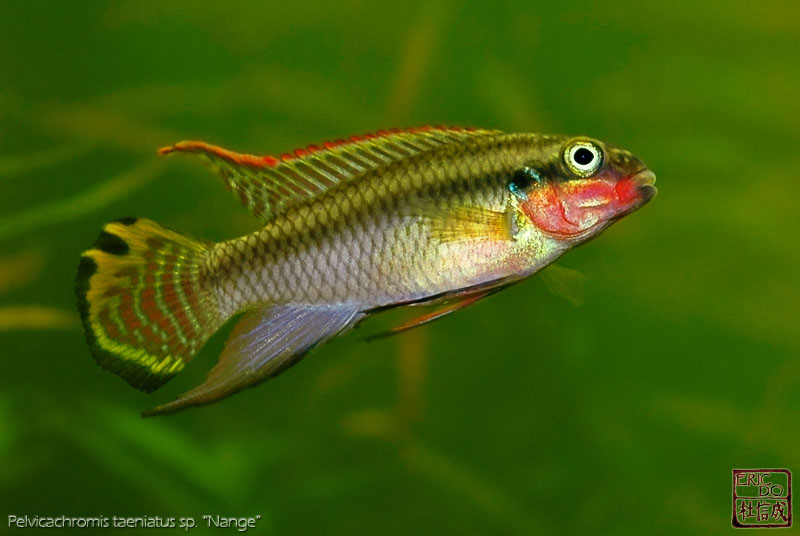
vs. Tamron 90mm (older manual focus macro; the AF version is awesome)
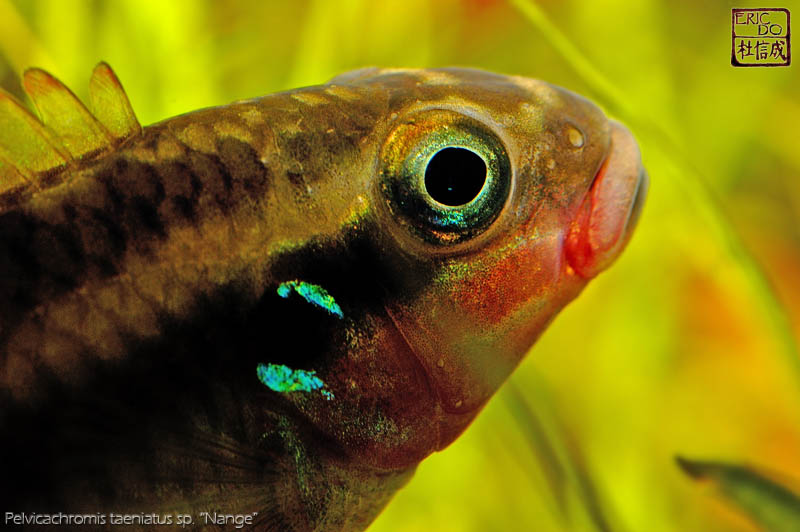
Tank:
18-55mm lens (for full tank shots and larger fish)
Macro of some sort
Tripod - optional
Non-tank General purpose:
1. multi-purpose f/3.5-5.6 (daylight shots) - use your kit lens; maybe take a look at the 17-40L for Canon or the 18-70mm for Nikon (if you can find one)
2. night lense -cost? - Tripod for long exposures and any lens really. You'll be stopping down anyways. For limited light, any fast lens (1.4 primes or 2.8 zooms), or invest in a flash.
3. what else? - Tripod comes in handy in certain instances. Flashes for limited light. Remote shutters so that you don't have to hold the button down when doing long exposures or if you want to take a pic of yourself. Good quality strap is useful (the stock ones bite down on your shoulders after awhile; I use Op/Tech pro straps on all my cameras). UV filter as suggested is good for front lens protection from dust, sand, etc. Software for processing your pics (shoot in RAW if you can) such as Adobe Photoshop.
Anyways, to make it short, if you're considering a DSLR, consider the used market as well. Nikon D60 kit with 18-55mm lens and 383 clicks for $450 is pretty dang good price. Nikon D2X can be picked up for $800 which is pretty amazing considering that it originally sold for $5k. It's a great workhorse and I still use mine as a secondary body; you have to get used to its weight and size if you've never dealt with one before.
Also, take a look at third party lenses. For macro, that'll be the Tamron 90mm f/2.8 macro. You can also use your standard kit lens but with less than optimal results.
Nikon's old kit lens (18-70mm f/3.5-4.5 - awesome if you can find one; fish ~2")

vs. Tamron 90mm (older manual focus macro; the AF version is awesome)

Tank:
18-55mm lens (for full tank shots and larger fish)
Macro of some sort
Tripod - optional
Non-tank General purpose:
1. multi-purpose f/3.5-5.6 (daylight shots) - use your kit lens; maybe take a look at the 17-40L for Canon or the 18-70mm for Nikon (if you can find one)
2. night lense -cost? - Tripod for long exposures and any lens really. You'll be stopping down anyways. For limited light, any fast lens (1.4 primes or 2.8 zooms), or invest in a flash.
3. what else? - Tripod comes in handy in certain instances. Flashes for limited light. Remote shutters so that you don't have to hold the button down when doing long exposures or if you want to take a pic of yourself. Good quality strap is useful (the stock ones bite down on your shoulders after awhile; I use Op/Tech pro straps on all my cameras). UV filter as suggested is good for front lens protection from dust, sand, etc. Software for processing your pics (shoot in RAW if you can) such as Adobe Photoshop.
You can use the regular kit lens to take some shots of your aquarium, though you will be struggling a bit more because of limitations of the lens, not the camera. The picture keeping rate will likely be much lower than if you were to have a more suitable lens. I assume at the $500 price range you're looking in the Canon 100mm 2.8; it is a stellar lens IME. Well worth the price tag; you can look into the Sigma 105mm 2.8 to save some change -also look for these items used. I've seen the Canon 100mm go for as low as $400 in mint condition.
That said, the Canon 18-55 IS (substantially better than the MkI, non-IS) is still a pretty rocking lens for everyday use, if you're able to work around some small things. I used it for a long time when I had my first dSLR (Rebel XTi). Also, you do not need the latest Rebel body (though there are benefits to doing so), so consider looking into a used Rebel body. The XTi, Xs, XSi, T1i, and T21 are all fantastic light weight cameras bodies; the latter to rebels can take HD video as well. All can be had for a good price even in used condition.
For night time shots, I'd recommend a tripod and a remote/wire shutter release. The remote shutter release will also be handy for your macro shots as well. Feel free to use any lens. If you're shooting in low light conditions, you might want to look into lenses that can stop down to at least 2.8. These tend to get a little pricey, though,everything is a trade off.You
As far as "what else?" goes, I'd recommend a UV filter in order to protect the front element of your lens. Some are for it, and others not, but I am an advocate of better safe than sorry. They have saved my butt on more than one occasion. The front element of lenses are pretty tough and hard to damage to begin with, so it may not be necessary. You can always get one later down the line.
Edit/ Don't forget memory cards as well!
That said, the Canon 18-55 IS (substantially better than the MkI, non-IS) is still a pretty rocking lens for everyday use, if you're able to work around some small things. I used it for a long time when I had my first dSLR (Rebel XTi). Also, you do not need the latest Rebel body (though there are benefits to doing so), so consider looking into a used Rebel body. The XTi, Xs, XSi, T1i, and T21 are all fantastic light weight cameras bodies; the latter to rebels can take HD video as well. All can be had for a good price even in used condition.
For night time shots, I'd recommend a tripod and a remote/wire shutter release. The remote shutter release will also be handy for your macro shots as well. Feel free to use any lens. If you're shooting in low light conditions, you might want to look into lenses that can stop down to at least 2.8. These tend to get a little pricey, though,everything is a trade off.You
As far as "what else?" goes, I'd recommend a UV filter in order to protect the front element of your lens. Some are for it, and others not, but I am an advocate of better safe than sorry. They have saved my butt on more than one occasion. The front element of lenses are pretty tough and hard to damage to begin with, so it may not be necessary. You can always get one later down the line.
Edit/ Don't forget memory cards as well!
I'm not sure if Kenko tubes work with Nikon's line of lenses, but another macro option would be to purchase Kenko tubes for macro work. These can be had for substantially less than a dedicated macro lens [though I would almost always prefer the latter].
Damn good pictures you've there Eric!
The Canon kit lens is a pretty rocking lens. I took these two pictures about two years ago with the EF 18-55 3.5-5.6, non-IS version. The IS version is optically better than it's predecessor. But both fully usable, by all means.
Always remember also, you can purchase the camera body by itself to save a bit of money. You can then use the saved change to get your own lens of choice for the camera.
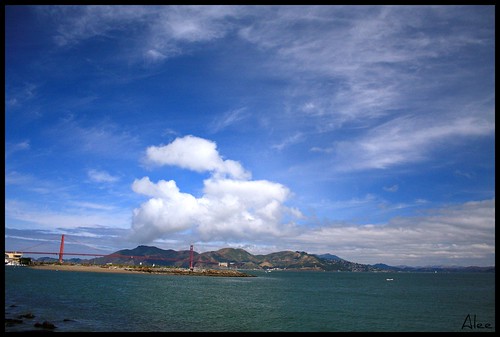

Damn good pictures you've there Eric!
The Canon kit lens is a pretty rocking lens. I took these two pictures about two years ago with the EF 18-55 3.5-5.6, non-IS version. The IS version is optically better than it's predecessor. But both fully usable, by all means.
Always remember also, you can purchase the camera body by itself to save a bit of money. You can then use the saved change to get your own lens of choice for the camera.


Yup, they work with Kenko tubes. Here's some images that I took back in 2007 with the configuration:
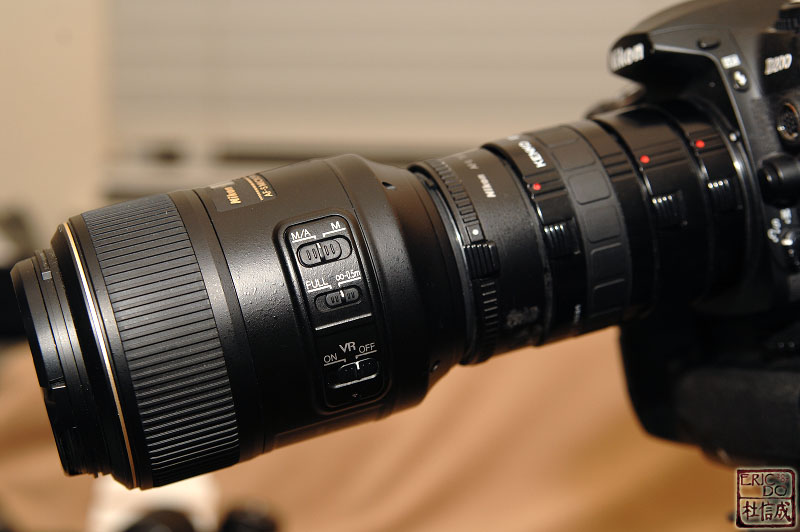
105mm VR lens front
1.4x TC next
all 3 Kenko tubes
Macro lens with 1.4x TC

You can also flip the lenses around to get some decent macro as well, but the working distance is extremely shallow.
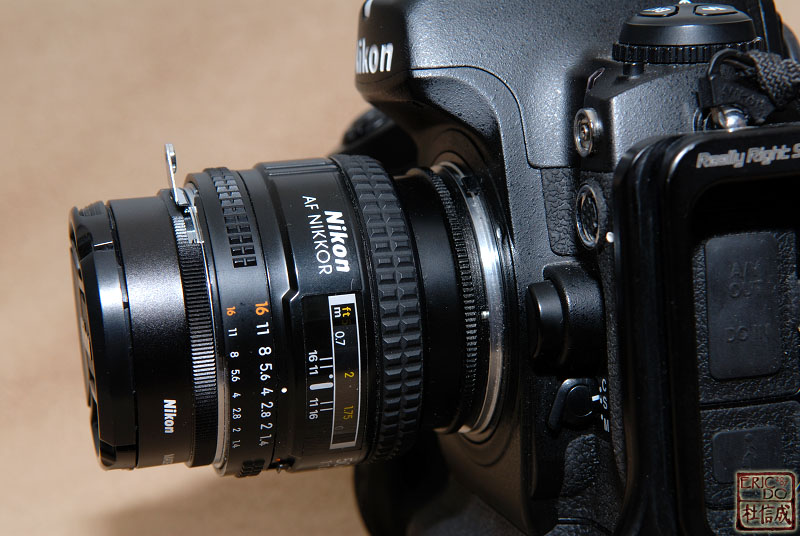
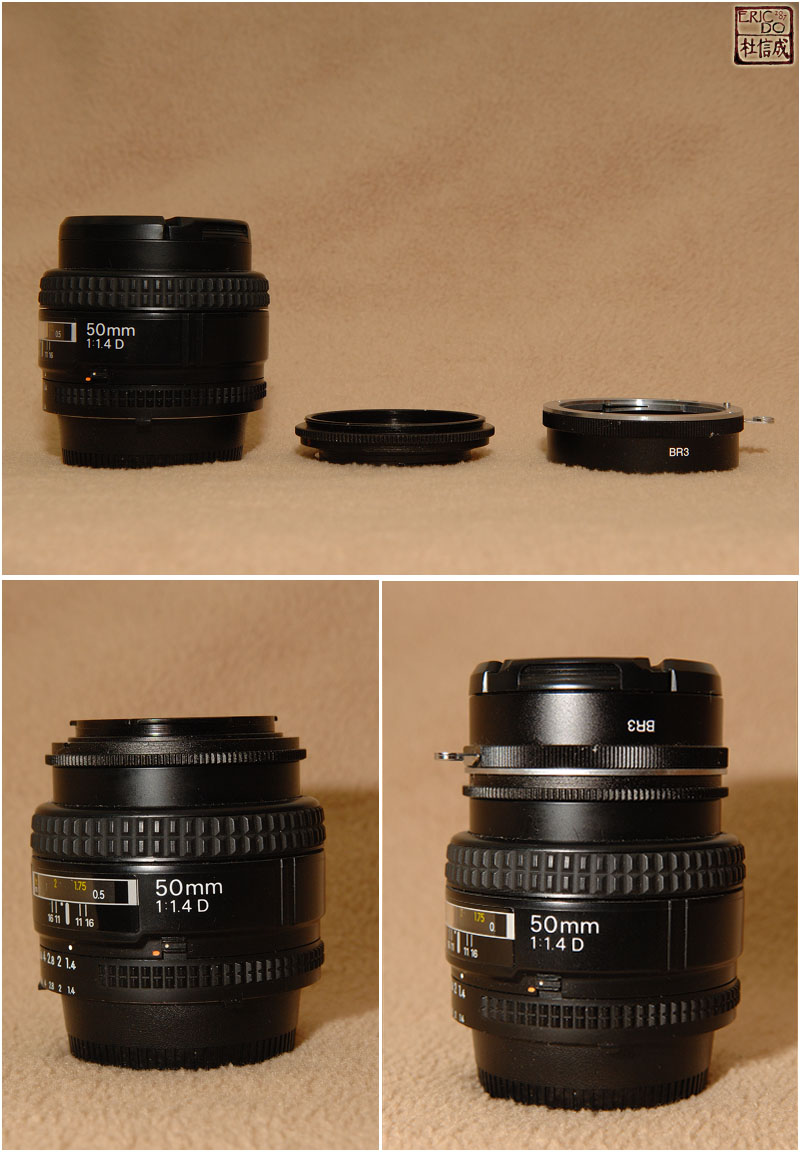
50mm f/1.4D reversed using BR3 attachment
To get an idea of how well the 50mm f/1.4D works, here's a couple of images.
50mm
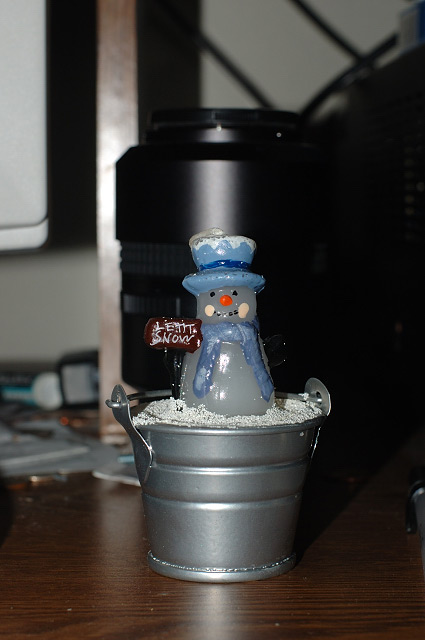
Reverse 50mm
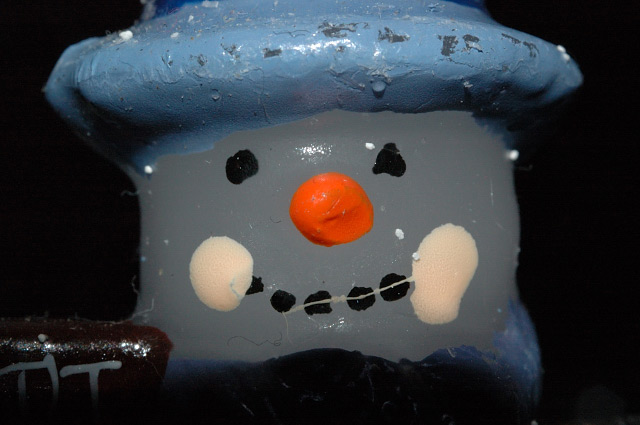
Does amazingly well out in the field for bugs. I left my macro lens at home (out shooting birds with long lenses that day) and didn't have a dedicated macro lens around. Luckily I had the 50mm lens around and just flipped it.
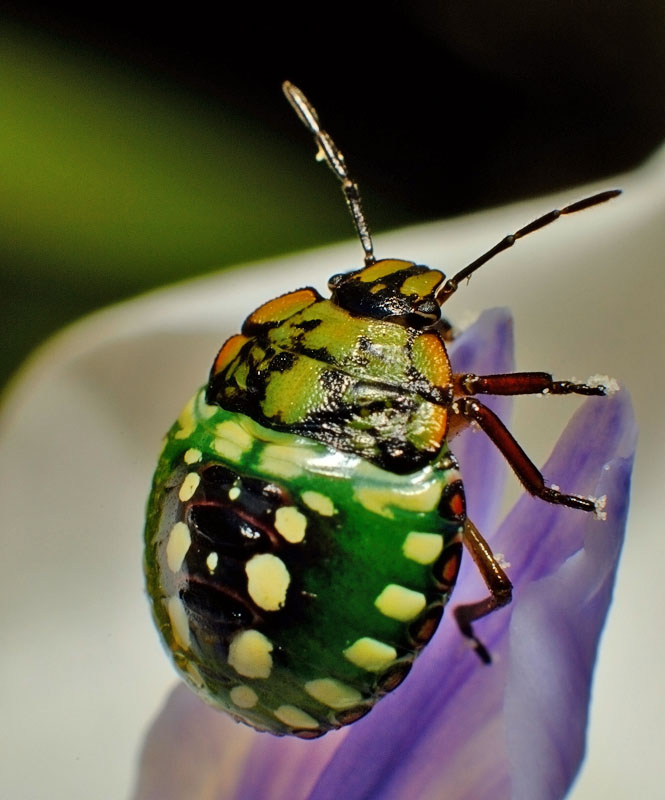

105mm VR lens front
1.4x TC next
all 3 Kenko tubes
Macro lens with 1.4x TC

You can also flip the lenses around to get some decent macro as well, but the working distance is extremely shallow.


50mm f/1.4D reversed using BR3 attachment
To get an idea of how well the 50mm f/1.4D works, here's a couple of images.
50mm

Reverse 50mm

Does amazingly well out in the field for bugs. I left my macro lens at home (out shooting birds with long lenses that day) and didn't have a dedicated macro lens around. Luckily I had the 50mm lens around and just flipped it.

Just about anywhere. You really only the reversing ring.
http://www.bhphotovideo.com/c/search?Ntt=nikon+br&N=0&InitialSearch=yes
The BR3 is really only needed for a filter, or if you want to flip a lens onto another.
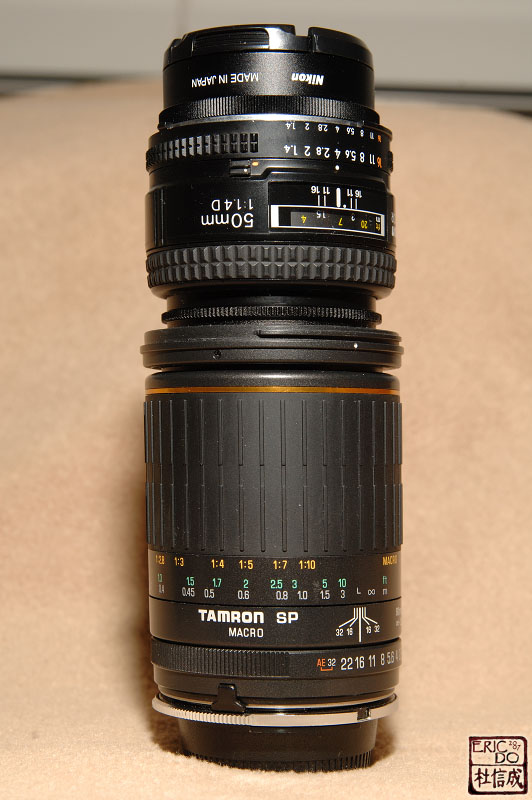
The combo gets you to nearly 2:1 magnification, which isn't bad. Flipping it on the 105mm would get it slightly above 2:1; whereas it's 2:1 exactly on the 100mm macro.
That Tamron lens is heading over to the East Coast soon to a friend for $100. Not too bad considering that the manual version is still fetching a price of >$300 new with the Adaptall. I've been trying to get rid of the lens for awhile (replaced with the 105mm for awhile now) and no one that I knew wanted it for such a low price.

http://www.bhphotovideo.com/c/search?Ntt=nikon+br&N=0&InitialSearch=yes
The BR3 is really only needed for a filter, or if you want to flip a lens onto another.

The combo gets you to nearly 2:1 magnification, which isn't bad. Flipping it on the 105mm would get it slightly above 2:1; whereas it's 2:1 exactly on the 100mm macro.
That Tamron lens is heading over to the East Coast soon to a friend for $100. Not too bad considering that the manual version is still fetching a price of >$300 new with the Adaptall. I've been trying to get rid of the lens for awhile (replaced with the 105mm for awhile now) and no one that I knew wanted it for such a low price.
After months of putting it off and plenty of temptation and encouragement along the way, I finally bought a camera for an upcoming hiking trip (what a good excuse to add 3lbs to my load).
It's a t1i body, 17-55mm f2.8.
I'll hold off on getting the 100mm macro till i came back from my trip. I'm still deciding between the 100mm macro non IS vs IS. Not sure if I'd use the IS much to justify the 2x pricetag! Do you guys mostly do tank shots in tripod anyway?
Confession: I'm clueless as to what to these Tv, Av, ISO do. Sigh. You mean the camera doesn't come with a user-guide installation CD that installs directly into my head? I could use a few books/online guide if you have any to recommend.
Oh, and also need camera bag for the hikes. What store has a good selection of bag? I'm planning to run Keeble&Shuchat later today.
Thanks everyone for the help!!
It's a t1i body, 17-55mm f2.8.
I'll hold off on getting the 100mm macro till i came back from my trip. I'm still deciding between the 100mm macro non IS vs IS. Not sure if I'd use the IS much to justify the 2x pricetag! Do you guys mostly do tank shots in tripod anyway?
Confession: I'm clueless as to what to these Tv, Av, ISO do. Sigh. You mean the camera doesn't come with a user-guide installation CD that installs directly into my head? I could use a few books/online guide if you have any to recommend.
Oh, and also need camera bag for the hikes. What store has a good selection of bag? I'm planning to run Keeble&Shuchat later today.
Thanks everyone for the help!!
I shoot most if not all my macro shots handheld, but I don't think you really need the IS/VR. You're gonna rely more on having a fast enough shutter speed to freeze your movements instead of relying on IS for that.
ISO: Same thing as ASA if you've ever shot film (higher the number the more light you can collect, at the cost of noise/graininess)
Tv: same thing as shutter priority, where you define the shutter speed and ISO and it determines the aperture
Av: aperture priority, where you define the aperture and ISO and the camera determines shutter speed
As for camera bags for hikes, really depends on whether you want a backpack or a slingbag. A backpack would be better for hikes or better weight distribution. K&S carries only the major brands such as Tenba and Lowepro. While both companies makes good bags, I found out that to get a true hiking bag for your camera gear, it's better to look outside of either companies.
I go hiking/camping with an Artery'x Khamsin 55 bag and then stick my Domke F3 bag inside the bottom of it and pack the rest of my gear on top (tent, sleeping bag, etc.). While it works, it's not the best configuration. If I was to look for another bag, I would take a look at the f-stop satori bag or the mountainsmith borealis bag (for shorter day hikes).
ISO: Same thing as ASA if you've ever shot film (higher the number the more light you can collect, at the cost of noise/graininess)
Tv: same thing as shutter priority, where you define the shutter speed and ISO and it determines the aperture
Av: aperture priority, where you define the aperture and ISO and the camera determines shutter speed
As for camera bags for hikes, really depends on whether you want a backpack or a slingbag. A backpack would be better for hikes or better weight distribution. K&S carries only the major brands such as Tenba and Lowepro. While both companies makes good bags, I found out that to get a true hiking bag for your camera gear, it's better to look outside of either companies.
I go hiking/camping with an Artery'x Khamsin 55 bag and then stick my Domke F3 bag inside the bottom of it and pack the rest of my gear on top (tent, sleeping bag, etc.). While it works, it's not the best configuration. If I was to look for another bag, I would take a look at the f-stop satori bag or the mountainsmith borealis bag (for shorter day hikes).
vivi said:After months of putting it off and plenty of temptation and encouragement along the way, I finally bought a camera for an upcoming hiking trip (what a good excuse to add 3lbs to my load).
It's a t1i body, 17-55mm f2.8.
I'll hold off on getting the 100mm macro till i came back from my trip. I'm still deciding between the 100mm macro non IS vs IS. Not sure if I'd use the IS much to justify the 2x pricetag! Do you guys mostly do tank shots in tripod anyway?
Confession: I'm clueless as to what to these Tv, Av, ISO do. Sigh. You mean the camera doesn't come with a user-guide installation CD that installs directly into my head? I could use a few books/online guide if you have any to recommend.
Oh, and also need camera bag for the hikes. What store has a good selection of bag? I'm planning to run Keeble&Shuchat later today.
Thanks everyone for the help!!
Wow, sweet pick up!
Eric did an awesome job of covering all the questions you brought forth, anything I say would only mimic his words.
With regards to macro photography, I always use a tripod and cable release when the situation allows. If I cannot use these things I will do whatever I must to make sure I am able to use a shutter speed quick enough to eliminate motion blur/handshake. I will bump the ISO, and use a lower f/stop accordingly. 1/50 sec. is hand-holdable to me. If you need to stop down more than 1/100 sec., you need to back off on the coffee
I use a Lowepro Fastpack for when I go on hikes and things. When I am not hiking, I use a Crumpler 7 MIllion Dollar Home.
Just got back from K&S. After one hour of trying our bags, i settled on Lowepro fastpack 100.
I picked up the body new, and the 17-55mm used locally (just noticed some dust inside, but i hope it's not that big of a deal). :-/ A bit of a buyer's remorse on the used lens. But oh well, i guess if i were to handle a new lens, i'd pick up dust in no time as well.
Eric, thanks for the quick tutorial on the modes. That helps a lot.
And thanks too on the IS vs non IS distintion. I guess i'll start with the non-IS then if i have more dough to burn, upgrade.
Alright, back to playing with the camera. Have a great weekend guys!
I picked up the body new, and the 17-55mm used locally (just noticed some dust inside, but i hope it's not that big of a deal). :-/ A bit of a buyer's remorse on the used lens. But oh well, i guess if i were to handle a new lens, i'd pick up dust in no time as well.
Eric, thanks for the quick tutorial on the modes. That helps a lot.
And thanks too on the IS vs non IS distintion. I guess i'll start with the non-IS then if i have more dough to burn, upgrade.
Alright, back to playing with the camera. Have a great weekend guys!
S
sdkeywords
Guest
I start with normal camera recommendations for normal people who just want great pictures, and get to suggestions for dedicated photographers, and end with great gift suggestions. CCTV Products
Lynn, if I had the choice, I would have gotten the IS. Pricey but worth it with macros IMO. Light is a problem with them when you don't run flash (usually a bad idea) or really bright light.
as for the settings (I'm simplifying things here)
Tv lets you control shutter speed. Faster the shutter speed (higher number ...well..it displays as a smaller number, but it is really a fraction that gets smaller. it displays 100 for 1/100 of a second and 300 for 1/300 of a second), the easier it is to capture an image that is moving without it looking blurry.
The faster the shutter speed, the more light you need
Av controls the depth of field, or the amount of things in focus. More depth of field (higher number), the more things front to back are in focus, but the more light you require
ISO is image quality. The more image quality you want (lower number)
For a given image with a given amount of light available, your camera has a to balance the parameters "ISO", "Av", and "Tv" Although you can let your camera choose everything, you usually first choose your ISO. then you can let your camera automatically balance Av with Tv. Suppose however, you want a very fast shutter speed (Tv mode where you manually select the speed), then your camera automatically figures out the aperature (Av) to balance the available light. In Manual Mode (M), YOU choose both Av and Tv settings. If you choose them wrong, you can over or underexpose a photo.
Hope that helps
as for the settings (I'm simplifying things here)
Tv lets you control shutter speed. Faster the shutter speed (higher number ...well..it displays as a smaller number, but it is really a fraction that gets smaller. it displays 100 for 1/100 of a second and 300 for 1/300 of a second), the easier it is to capture an image that is moving without it looking blurry.
The faster the shutter speed, the more light you need
Av controls the depth of field, or the amount of things in focus. More depth of field (higher number), the more things front to back are in focus, but the more light you require
ISO is image quality. The more image quality you want (lower number)
For a given image with a given amount of light available, your camera has a to balance the parameters "ISO", "Av", and "Tv" Although you can let your camera choose everything, you usually first choose your ISO. then you can let your camera automatically balance Av with Tv. Suppose however, you want a very fast shutter speed (Tv mode where you manually select the speed), then your camera automatically figures out the aperature (Av) to balance the available light. In Manual Mode (M), YOU choose both Av and Tv settings. If you choose them wrong, you can over or underexpose a photo.
Hope that helps
sdkeywords said:I start with normal camera recommendations for normal people who just want great pictures, and get to suggestions for dedicated photographers, and end with great gift suggestions. CCTV Products
Admin, could we please remove this user's access? I'm pretty sure it's a bot-spammer. The other post it had is -
http://www.bareefers.org/home/node/10881
sdkeywords said:I so super suck that my lameness cannot be conquered, I'm the king of douchiness and all of you are only super cool being real people and all my super awesome commercial link
Gomer said:Lynn, if I had the choice, I would have gotten the IS. Pricey but worth it with macros IMO. Light is a problem with them when you don't run flash (usually a bad idea) or really bright light.
Thanks for the tips! I didn't that - did you mean light is a problem with IS (and non-IS is fine)? Or the opposite?
Opposite.
Here are some pics to show you the difference between having IS and non-IS, and the relationship between ISO, aperture, and shutter speed. Left image is without VR (IS in Canon terms), right image is with VR all handheld. No moving object here, so minimum shutter speed isn't part of the equation for freezing the movement.
ISO 200, shutter speed: 2.5 sec, f/4

ISO 400, shutter speed: 1 sec, f/4

ISO 800, shutter speed: 1/5 sec, f/4

ISO 1600, shutter speed: 1/10 sec, f/4

ISO 3200, shutter speed: 1/20 sec, f/4

ISO 6400, shutter speed: 1/40, f/4

ISO 12,800, shutter speed: 1/80, f/4

ISO 25,600, shutter speed 1/160, f/4

ISO 102,400, shutter speed 1/320, f/4

Here are some pics to show you the difference between having IS and non-IS, and the relationship between ISO, aperture, and shutter speed. Left image is without VR (IS in Canon terms), right image is with VR all handheld. No moving object here, so minimum shutter speed isn't part of the equation for freezing the movement.
ISO 200, shutter speed: 2.5 sec, f/4

ISO 400, shutter speed: 1 sec, f/4

ISO 800, shutter speed: 1/5 sec, f/4

ISO 1600, shutter speed: 1/10 sec, f/4

ISO 3200, shutter speed: 1/20 sec, f/4

ISO 6400, shutter speed: 1/40, f/4

ISO 12,800, shutter speed: 1/80, f/4

ISO 25,600, shutter speed 1/160, f/4

ISO 102,400, shutter speed 1/320, f/4

